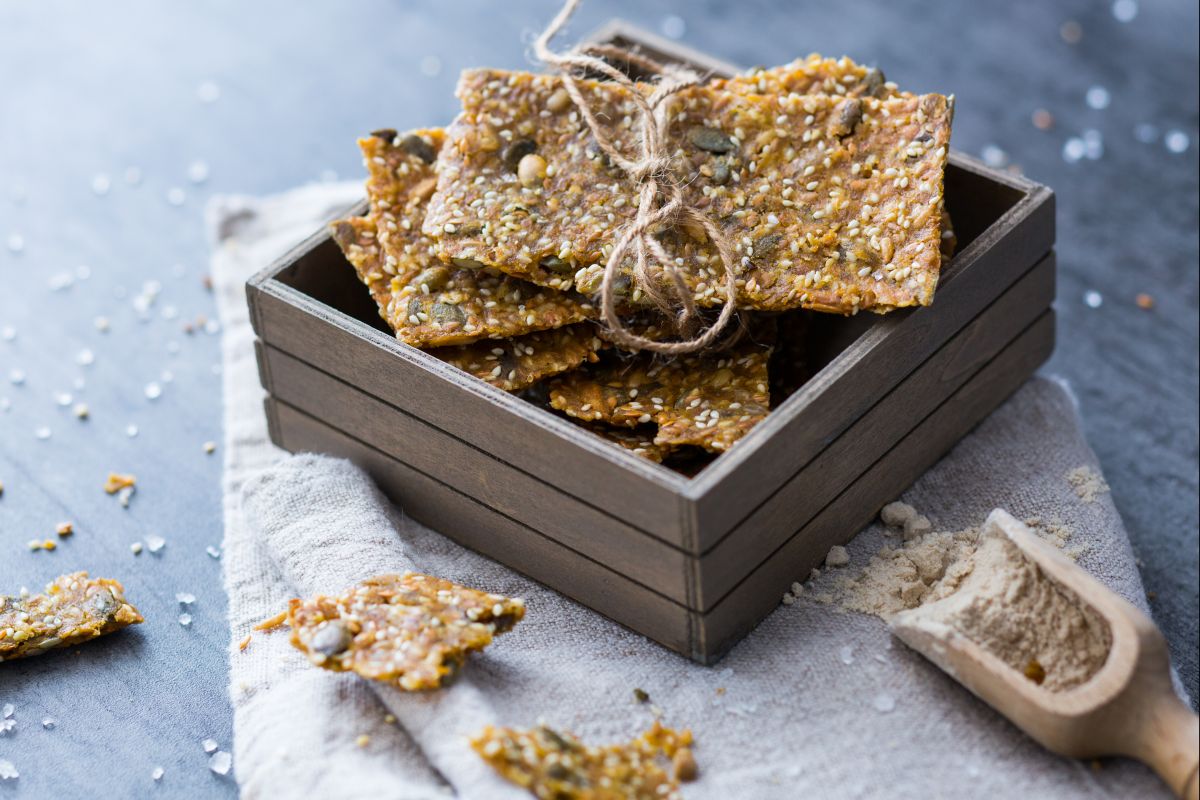Teff crackers

- Gluten Free
- Lactose Free
- Vegetarian
- Vegan
- Energy Kcal 139
- Carbohydrates g 8.8
- of which sugars g 0.3
- Protein g 3.5
- Fats g 10
- of which saturated fat g 1.31
- Fiber g 2.1
- Sodium mg 396
- Difficulty: Very easy
- Prep time: 10 min
- Cook time: 55 min
- Makes: 10 pieces
- Cost: Average
PRESENTATION
Teff crackers. Ever tried them? They're rooted in Ethiopian food traditions and are making waves in kitchens everywhere. Honestly, these gluten-free crackers really stand out because of teff flour—an ancient grain that's packed with fiber. Perfect for those avoiding regular wheat. When you take a bite, you get this crispy texture. Really really good. That's thanks to a mix of seeds. They bake to a golden hue and—seriously good—stay crunchy for days. You can always have a great snack on hand. I mean, pair these teff crackers with dips, spreads, or vegan cheese. And listen, create a unique snack board. Stack them with veggies. Pretty simple. Or try them with millet vegetable meatballs for a meal that’s both tasty and filling.
Switching things up with healthy snacks like these is a fun way to shake up your routine. If you’re aiming to include more whole grains, these are a win. Fans of gluten-free baking just love teff's versatility. It's got this slightly nutty, almost sweet flavor. Really sets it apart from regular wheat or rice crackers. Plus, these gluten-free crackers are perfect for the office, a picnic, or a casual hangout with friends. And they're super super easy to pair with various toppings. And here's the deal: since they’re made from ancient grains, you get a snack that’s not just crunchy but also rich in protein and minerals. People are noticing teff crackers not just for being gluten-free, but as a smart, natural option when you want something fresh that keeps you satisfied. For real, until your next meal.
You might also like:
INGREDIENTS
- Ingredients for 10 crackers
- Teff flour ½ cup (60 g)
- Fioretto corn flour ¼ cup (35 g)
- Water ¾ cup (170 g)
- Extra virgin olive oil 3 tbsp (45 g)
- Sunflower seeds ¼ cup (30 g)
- Pumpkin seeds 3 ½ tbsp (30 g)
- Sesame seeds 2 tbsp (30 g)
- Flax seed 3 tbsp (30 g)
- Fine salt 0.9 tsp (5 g)
- For sprinkling
- Coarse salt to taste
How to prepare Teff crackers

To prepare the teff crackers, first pour the water into a saucepan and heat it. In the meantime, take a large bowl and pour in all the dry ingredients: the teff flour, cornmeal 1, pumpkin seeds 2, flax seeds 3,

sunflower seeds 4, sesame seeds 5, and fine salt 6.

When the water is hot, add it to the mixture 7 and also add the oil 8. At this point, mix with a spatula or spoon to combine all the ingredients 9 until you get a soft dough.

Line a baking sheet with parchment paper and spread the dough with your hands 10 to form a rectangle about 1-2 mm thick 11. Bake in a static oven preheated to 300°F for 25 minutes, placing the tray on the lower rack of the oven. After this time, remove the tray from the oven and cut the rectangle with a sharp knife, first in half horizontally 12, then vertically to get 10 smaller rectangles.

Sprinkle the crackers with coarse salt 13 and bake again for 30 minutes, this time on the middle rack of the oven. After this time, remove the tray from the oven again and let it cool 14. Your teff crackers are ready to be munched on 15!